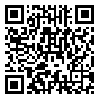BibTeX | RIS | EndNote | Medlars | ProCite | Reference Manager | RefWorks
Send citation to:
URL: http://jap.iums.ac.ir/article-1-27-en.html
Background and aims: Infraclavicular nerve block (ICNB) is one of the most efficacious peripheral nerve blocks for upper extremity procedures, associated with several potential complications. Recently, some authors have recommended ultrasound-guided peripheral nerve block for ICNB. The current study is aimed to compare the outcomes of ICNB utilizing combined ultrasound guidance and neurostimulation with the outcomes of ICNB using neurostimulation alone.
Materials and methods: There were 60 patients, candidate for elective upper extremity surgery, who contributed in the current double-blinded randomized clinical trail. Patients were randomly divided into 2 groups based on the ICNB technique: combined ultrasound guidance and neurostimulation group (UN) and neurostimulation group (N). Finally, the procedure time, time interval between injection and drug effect, the rate of successful blocks, sensory and motor block duration, and complications were compared between the two groups.
Results: The mean procedure time and the time interval between injection and drug effect were the same. We found significantly longer sensory (66.8±11.7 V.s 60.9±10.2 min p=0.04) and motor (57±11.4 V.s 50.8±10.4 min p=0.032) block duration in UN group. ICNB failed in 10 patients in the N group and 2 patients in the UN group (p=0.021). There were one patient with subcutaneous hematoma in the UN group and 3 patients in the N group.
Conclusion: ICNB utilizing ultrasound guidance combined with neurostimulation is a safe and efficacious technique with a higher success rate compared to neurostimulation alone. Authors strongly recommend using ultrasound in infraclavicular nerve block.
| Rights and permissions | |
 |
This work is licensed under a Creative Commons Attribution-NonCommercial 4.0 International License. |





